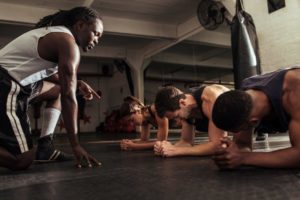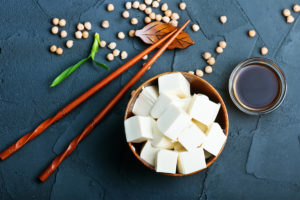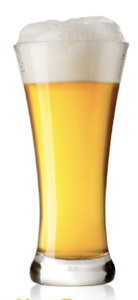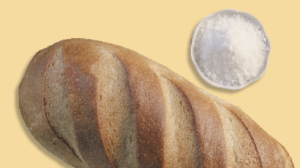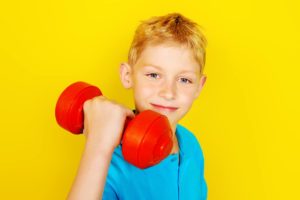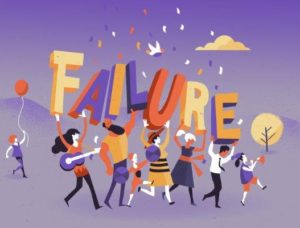Wellness
Exergaming May Improve Independence Among Older Adults
Maybe you’ve thought about integrating exergaming—exercise combined with video games and other elements of technology—into some of your classes or sessions. Don’t forget to include older adults. A recent study found that seniors with mild cognitive impairment (MCI), a precursor to Alzheimer’s, showed significant improvement in certain complex thinking and memory skills after exergaming.
Equal Calories Burned ≠ Same Results
Many people fixate on the number of exercise calories they burn. New research, sponsored by Les Mills International, shows that even when two group fitness activities (indoor cycling and a resistance workout) were matched for duration and caloric expenditure, they did not have equivalent metabolic effects—which could influence long-term training results. Lead study author Nigel Harris, PhD, said, “The type of exercise used to burn those calories . . . impacts the long-term positive effects that exercise has on the body.”
How to Help Participants Find Flow
For a moment, think about your own workouts. Tap into that feeling of being completely absorbed in your favorite fitness routine. Everything else fades away, and your entire focus is on the present moment. You feel confident in your body’s abilities, you’re challenging yourself, and you find great meaning in what’s happening now. You’re in the zone. Before you know it, your workout is over, and you can’t wait to do it again.
Pilates for Recreational Athletes
Professional athletes of all kinds have discovered that adding Pilates to their training can improve performance, reduce injury, speed recovery, and help their hardworking bodies stay balanced and healthy (Caple 2016; Knowlton 2016; Saxon 2016). Pilates—a whole-body exercise system that can help you develop strength, functional flexibility, coordination and balance—can offer those same benefits to recreational athletes. A well-rounded program, particularly one offered in a fully equipped Pilates studio, can do wonders for athletes of almost any age, ability or sport.
The Group Dynamic
clients: Ben, Pat, Jacob (trainer), Jeanine, Tania, Jennifer | personal trainer: Jacob Trione, CEO and Founder, Triaffect Fitness | location: Clear Lake City, Texas
Phytoestrogens and the Safety of Soy
Are phytoestrogens safe? The growing popularity of soy products in U.S. and European diets has raised considerable controversy.
You Booze, You Lose
It’s increasingly looking like the reported health benefits of drinking alcohol (hello, French paradox) is another case of something being too good to be true. A large international investigation published in The Lancet in April studied data from nearly 600,000 current drinkers in 19 countries. Researchers found that drinking about 100 g of alcohol—around five pints of beer or five 175-milliter glasses of wine—per week is the safe upper limit.
Question of the Month
America has become a nation of snackers and around-the-clock eaters. But for people who want to get healthy, it might be a good idea to avoid the kitchen more often. Intermittent fasting—cycling between periods of normal consumption and periods of lower calorie intake—has become increasingly popular, and research is starting to show that the approach has promise for weight loss and other health measures.
Portions: We Can Be Happy With Less
Ballooning portion sizes are considered a major player in the startling rise in obesity rates in recent decades, but current research points to evidence that we can turn this around.
A study in the April edition of The American Journal of Clinical Nutrition showed that exposure to smaller food portions can recalibrate people’s perception of how much is enough. In the first of three experiments, volunteers randomly ate either larger (440-calorie) or smaller (220-calorie) portions of the same quiche-and-salad meal.
Salt Lurks Where You Might Not Expect It
We know foods like deli meats, pizza and potato chips have lots of sodium. But salt also sneaks into less obvious foods, like bread. A 2018 survey by World Action on Salt and Health in London looked at 2,318 bread products from 32 countries (including the United States) and found that more than half of the breads had over 500 milligrams of sodium per 100-gram portion (about 2 slices of packaged bread). Even worse, a third of all breads delivered more than 1,130 mg of salt for every 100 g.
Yes, Unhealthy Eating Is A Killer
We have more proof that diet plays a huge role in staving off some of today’s biggest killers. Nearly half of all U.S. deaths from heart disease, stroke and type 2 diabetes in 2012 could be attributed to substandard eating habits, according to research published in JAMA in 2017. The study was based on death certificate data and funded by the National Institutes of Health and the National Heart, Lung, and Blood Institute.
Young Talent in the Kitchen
If we want adults to eat a healthier diet, we should get them cooking more often when they’re young. That’s the conclusion of a report published in the May edition of the Journal of Nutrition Education and Behavior. The findings drew on data from the Project Eating and Activity in Teens and Young Adults longitudinal study in the Minneapolis-Saint Paul area.
To Grow Healthier, Happier Adults, Raise Fit Kids
Today’s inactive kids are tomorrow’s unhealthy adults. Our society will pay the price for young people’s profound lack of exercise if we fail to turn this trend around. Few behaviors more significantly influence child health than physical activity. Yet children and adolescents are not moving enough, at the expense of their own health as well as that of their communities. More needs to be done to support families and society in raising fit kids.
Here’s to Hormones!
When you’re designing a fitness program, you may or may not consider the endocrine system, and yet it’s a key component of wellness. A network of glands that secrete hormones to support bodily functions, the endocrine system regulates internal processes—including growth and development, metabolism, homeostasis, response to stimuli, and reproduction—via the bloodstream (Sargis 2016).
Stress and Nutrition
Feeling stressed? You’re not alone! The trick is knowing what to do about it.
Research tells us that stress-relieving strategies include making a concerted effort to minimize stressors, engaging in meditation and physical activity, and nurturing strong social relationships.
That’s good advice, but it ignores the common plan that many of us resort to: the “comfort food” strategy.
Celebrating Failure
There’s a problematic F-word that the fitness industry rarely cares to discuss: failure. We’ve all experienced failure to one degree or another—and so have our clients—but you’d hardly know it in this industry where being positive and motivating is our specialty. We push success, and we push it hard, leaving little room for clients to feel accepted and supported during periods of low success or even spectacular failure.
Shift Happens! Saying YES to the Next Step
It’s time to stop saying, ‘I’m only a fitness professional. Every fitness pro knows that you are a confidante, a best friend, a coach—maybe even a self-esteem consultant—and that needs to be honored,” says Robert Holden, PhD, New York Times best-selling author; director of Success Intelligence, a consultancy group offering leadership programs and coaching; public speaker; and weekly radio host of Shift Happens!
Ask the RD
Question: I have heard that drinking apple cider vinegar is good for weight loss. Is that true, or is it too good to be true?
Answer: Apple cider vinegar has a cure-all reputation for helping with weight loss, cholesterol,
diabetes, acne, digestive problems and other issues. The truth is somewhat less impressive, but apple
cider vinegar does have proven health benefits.
Caffeine Boosts Performance in Athletes Who Use It Rarely
Caffeine stimulates the central nervous system, allowing athletes of all stripes to complete longer, harder workouts. But new research suggests that people who usually avoid coffee and energy drinks likely benefit the most from caffeine.
Why We Eat Too Much at Night
It’s 10 p.m., you’re catching up on email, and it suddenly hits you: a Goliath-sized craving for chocolate-chunk ice cream. Findings in the International Journal of Obesity show why the evening hours pose such a high risk for overeating and unhealthy munching. For the study, researchers from Johns Hopkins University School of Medicine recruited 32 adults with excess weight who volunteered for two experimental protocols:


